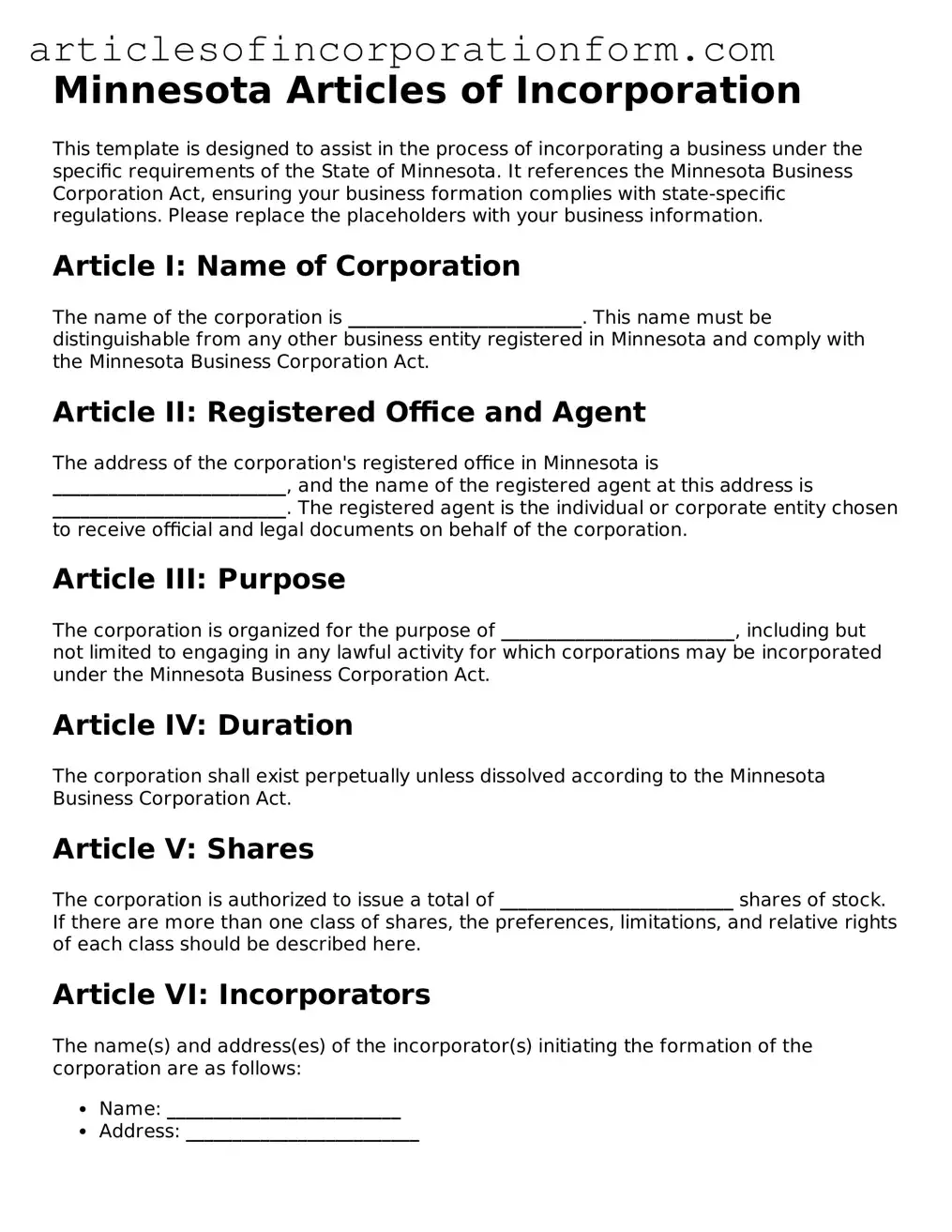Minnesota Articles of Incorporation
This template is designed to assist in the process of incorporating a business under the specific requirements of the State of Minnesota. It references the Minnesota Business Corporation Act, ensuring your business formation complies with state-specific regulations. Please replace the placeholders with your business information.
Article I: Name of Corporation
The name of the corporation is _________________________. This name must be distinguishable from any other business entity registered in Minnesota and comply with the Minnesota Business Corporation Act.
Article II: Registered Office and Agent
The address of the corporation's registered office in Minnesota is _________________________, and the name of the registered agent at this address is _________________________. The registered agent is the individual or corporate entity chosen to receive official and legal documents on behalf of the corporation.
Article III: Purpose
The corporation is organized for the purpose of _________________________, including but not limited to engaging in any lawful activity for which corporations may be incorporated under the Minnesota Business Corporation Act.
Article IV: Duration
The corporation shall exist perpetually unless dissolved according to the Minnesota Business Corporation Act.
Article V: Shares
The corporation is authorized to issue a total of _________________________ shares of stock. If there are more than one class of shares, the preferences, limitations, and relative rights of each class should be described here.
Article VI: Incorporators
The name(s) and address(es) of the incorporator(s) initiating the formation of the corporation are as follows:
- Name: _________________________
- Address: _________________________
Article VII: Board of Directors
The business and affairs of the corporation shall be managed by or under the direction of the Board of Directors. The number of directors shall be fixed in accordance with the bylaws. However, the initial Board of Directors shall consist of _________________________ member(s), and their names and addresses are as follows:
- Name: _________________________, Address: _________________________
Article VIII: Indemnification
The corporation shall indemnify any director, officer, employee, or agent of the corporation to the fullest extent permitted by the Minnesota Business Corporation Act.
Article IX: Incorporator's Statement
I, _________________________, the incorporator of this corporation, declare under penalty of perjury that the information provided in these Articles of Incorporation is true and correct to the best of my knowledge, belief, and understanding. In witness thereof, I have executed these Articles of Incorporation on _________________________.
